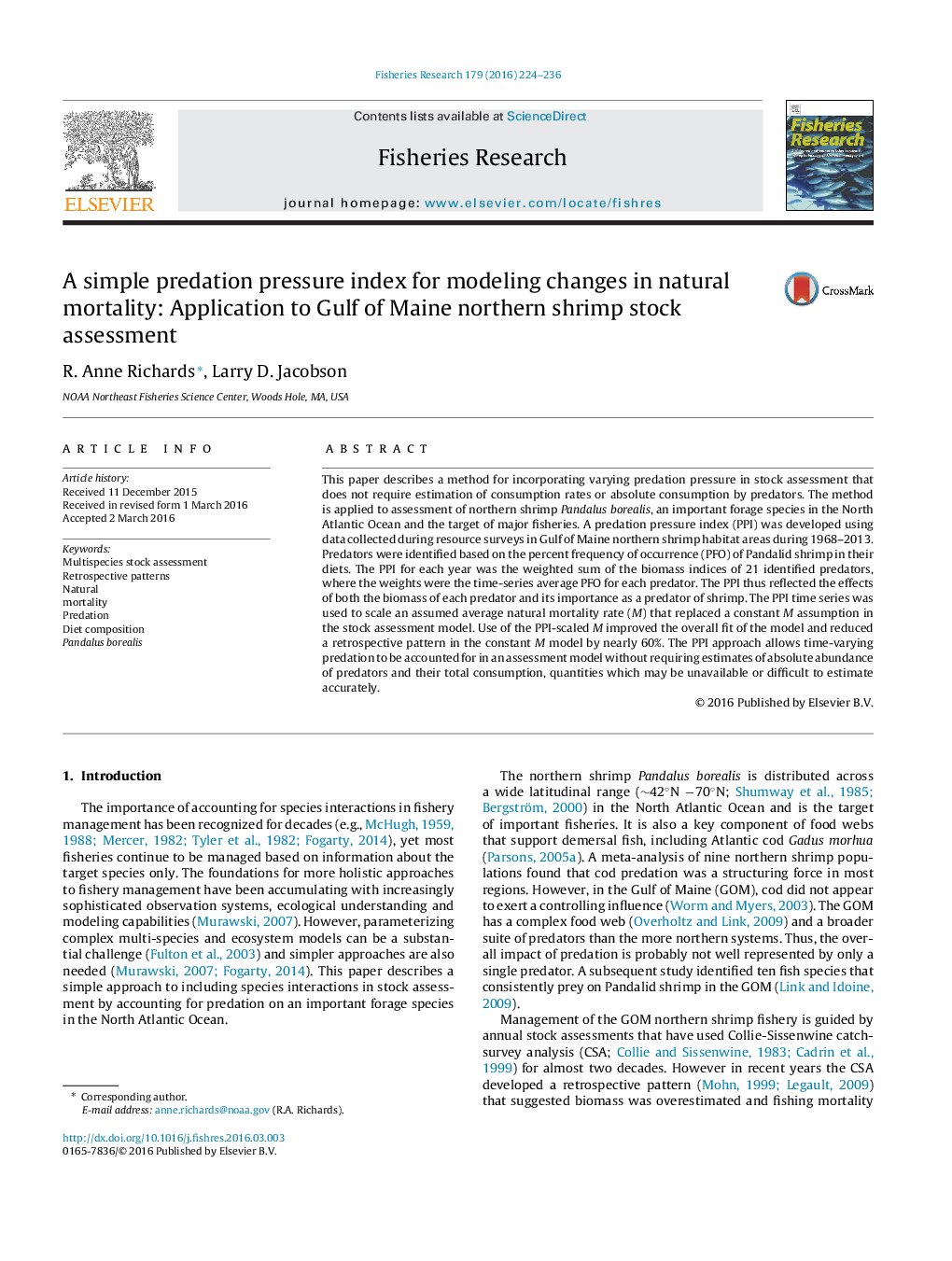| کد مقاله | کد نشریه | سال انتشار | مقاله انگلیسی | نسخه تمام متن |
|---|---|---|---|---|
| 6385364 | 1626790 | 2016 | 13 صفحه PDF | دانلود رایگان |
عنوان انگلیسی مقاله ISI
A simple predation pressure index for modeling changes in natural mortality: Application to Gulf of Maine northern shrimp stock assessment
ترجمه فارسی عنوان
یک شاخص فشار شکنی ساده برای مدل سازی تغییرات در مرگ و میر طبیعی: کاربرد در ارزیابی سهام میگو در خلیج مین شمالی
دانلود مقاله + سفارش ترجمه
دانلود مقاله ISI انگلیسی
رایگان برای ایرانیان
کلمات کلیدی
موضوعات مرتبط
علوم زیستی و بیوفناوری
علوم کشاورزی و بیولوژیک
علوم آبزیان
چکیده انگلیسی
This paper describes a method for incorporating varying predation pressure in stock assessment that does not require estimation of consumption rates or absolute consumption by predators. The method is applied to assessment of northern shrimp Pandalus borealis, an important forage species in the North Atlantic Ocean and the target of major fisheries. A predation pressure index (PPI) was developed using data collected during resource surveys in Gulf of Maine northern shrimp habitat areas during 1968-2013. Predators were identified based on the percent frequency of occurrence (PFO) of Pandalid shrimp in their diets. The PPI for each year was the weighted sum of the biomass indices of 21 identified predators, where the weights were the time-series average PFO for each predator. The PPI thus reflected the effects of both the biomass of each predator and its importance as a predator of shrimp. The PPI time series was used to scale an assumed average natural mortality rate (M) that replaced a constant M assumption in the stock assessment model. Use of the PPI-scaled M improved the overall fit of the model and reduced a retrospective pattern in the constant M model by nearly 60%. The PPI approach allows time-varying predation to be accounted for in an assessment model without requiring estimates of absolute abundance of predators and their total consumption, quantities which may be unavailable or difficult to estimate accurately.
ناشر
Database: Elsevier - ScienceDirect (ساینس دایرکت)
Journal: Fisheries Research - Volume 179, July 2016, Pages 224-236
Journal: Fisheries Research - Volume 179, July 2016, Pages 224-236
نویسندگان
R. Anne Richards, Larry D. Jacobson,
